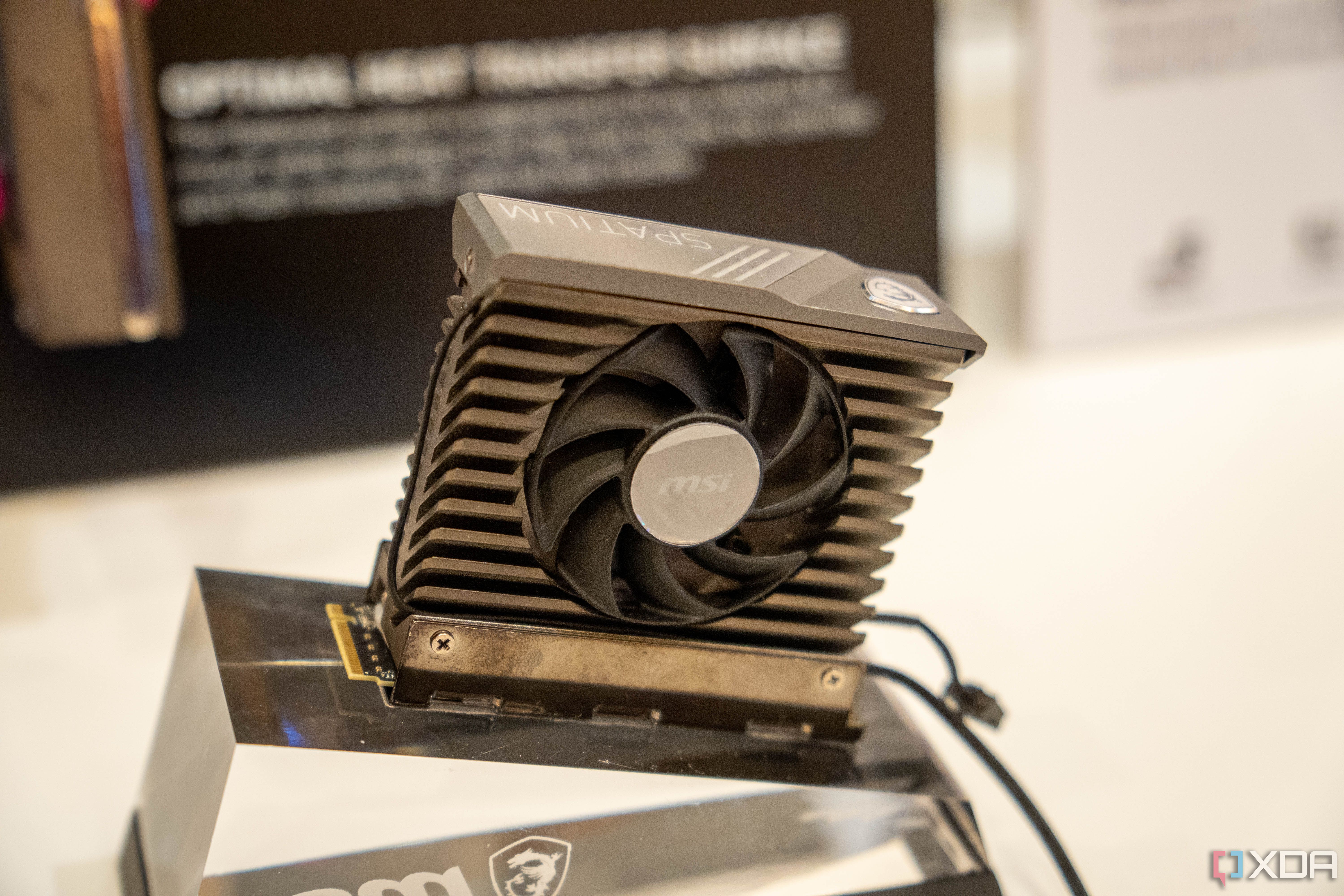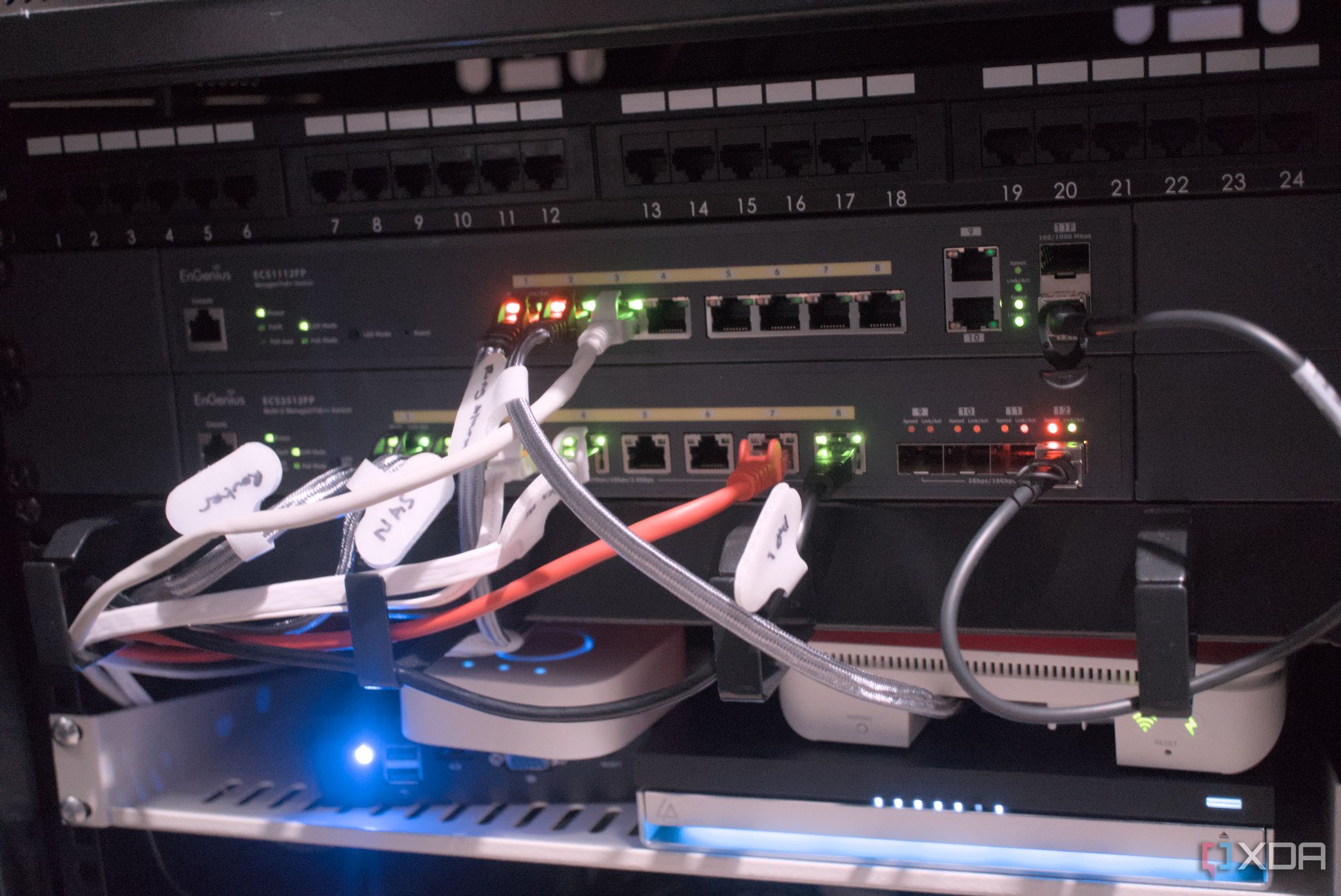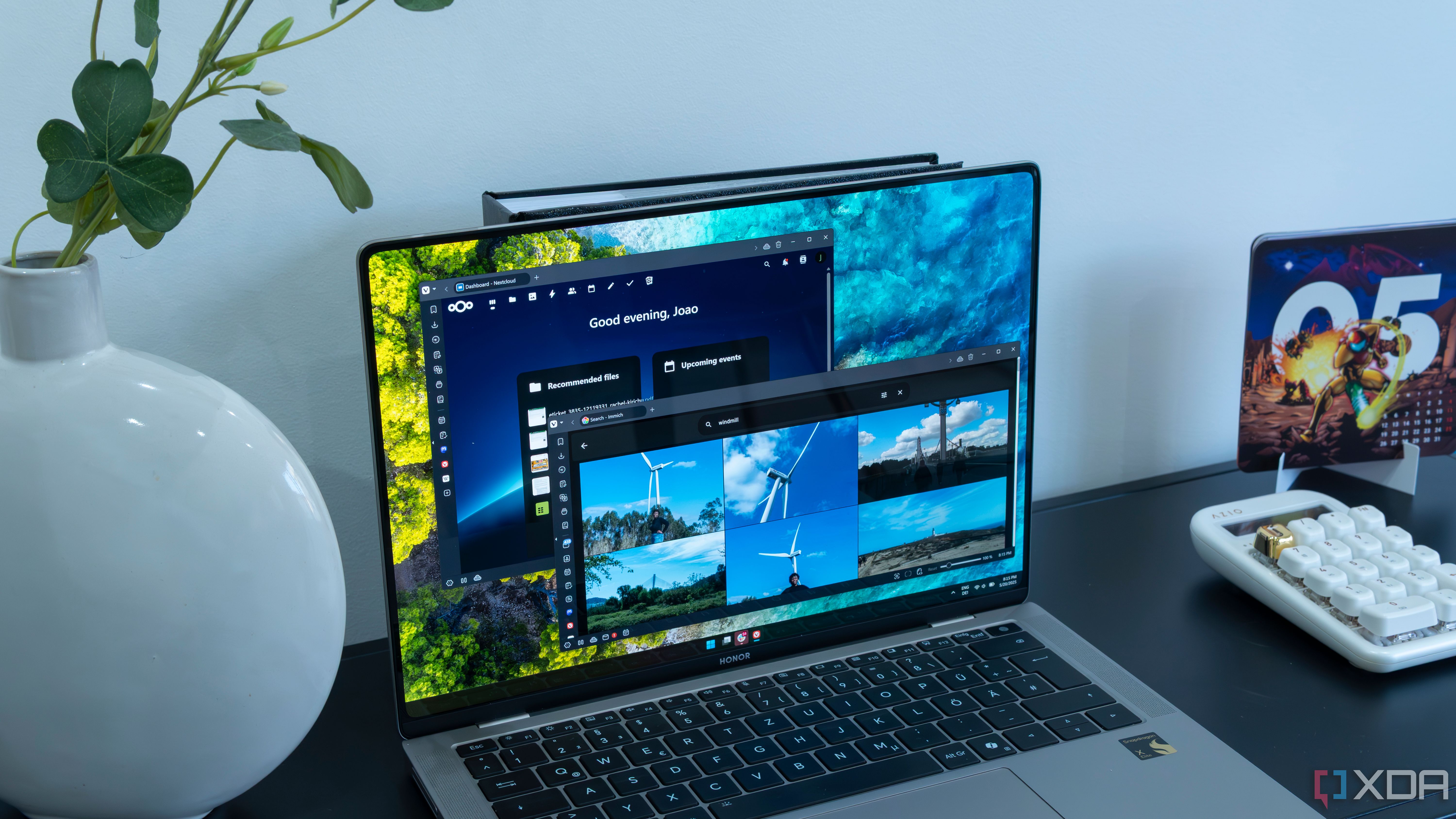



PCIe Gen5 SSDs are redefining performance benchmarks for both consumer and professional computing, but their unprecedented speeds come with a downside: significant heat output. Unlike Gen4 drives, which often sufficed with passive cooling solutions, Gen5 SSDs frequently require active cooling—such as dedicated fans or larger heatsinks—to manage thermal loads. Modern Gen5 drives routinely achieve sequential read and write speeds above 10,000 MB/s, making them invaluable for high-end applications like 8K video editing, scientific data processing, and real-time analytics. For example, recent benchmarks by hardware review sites show that the top-tier models from Samsung, MSI, and Corsair not only surpass previous generations in raw data rates but do so at the cost of operating temperatures that can easily exceed 70°C under typical workloads.
This thermal challenge has driven a wave of innovation among SSD manufacturers. Many Gen5 drives now ship with oversized, multi-layer heatsinks and recommend or even include compact fans, while case designers are prioritizing airflow in motherboards and enclosures to accommodate these requirements. Notably, some motherboards now feature integrated M.2 cooling solutions tailored for Gen5 SSDs, reflecting an industry-wide recognition of the issue. For DIY builders and IT professionals, ensuring thermal headroom has become a key step in system planning, influencing component selection and even the physical layout of builds.
The broader implications are significant. As SSDs become central to next-generation gaming consoles, workstations, and data centers, the focus on sustained performance is pushing users to rethink maintenance and monitoring strategies. Thermal throttling, once a niche concern, can now impact everyday tasks if cooling is neglected, leading to inconsistent performance or, in extreme cases, data corruption. Experts suggest regularly checking drive temperatures via manufacturer utilities and updating firmware that may optimize power use and thermals. Looking ahead, industry insiders expect further advances not just in storage controller efficiency, but in active cooling miniaturization and smarter, AI-driven thermal management. The Gen5 era ultimately reflects a wider truth: cutting-edge performance always comes with new engineering challenges, and thermal management is emerging as one of the defining factors in modern PC and server design.

For those looking to modernize their home or small business networks, managed network switches offer a leap in control, flexibility, and security compared to their unmanaged counterparts. Managed switches allow users to configure VLANs (Virtual LANs), prioritize traffic for devices and services, monitor individual port activity, and even detect network intrusions in real time. In a world where smart TVs, security cameras, gaming consoles, and an expanding list of Internet of Things (IoT) devices all clamor for bandwidth, the ability to segment and control network traffic ensures a smoother, safer experience for every user.
Real-world adoption of managed switches is accelerating as remote work and hybrid environments become the norm. Consider a home office that shares bandwidth with a child's gaming console and several WiFi cameras. With a managed switch, it's easy to assign higher priority to video conferences or business-critical apps, while segregating security camera traffic to a different VLAN—minimizing the risk of a compromised device threatening private work. Major brands like Ubiquiti, Netgear, and TP-Link have responded by launching affordable, compact managed switches with intuitive web and app interfaces, making powerful networking features accessible to non-experts.
Another key benefit is superior troubleshooting and performance optimization. Managed switches provide graphical dashboards and analytics, enabling users to spot bandwidth bottlenecks, identify problematic devices, and even receive alerts on unusual activity. This visibility, often missing from basic residential routers, can mean the difference between seamless video streaming and frustrating lag during peak hours. Small businesses, especially those with point-of-sale systems or guest WiFi, benefit from network insights that help ensure uptime and maintain robust customer service standards.
Managed switches also future-proof networks for the arrival of new technologies, such as WiFi 7 and higher-speed internet connections. As the average home or office network grows more complex, experts recommend investing in a managed switch as a proactive step. The low entry cost—often under $100 for basic models—contrasts with the high value delivered in reliability, scalability, and peace of mind. In summary, managed switches represent a smart, forward-looking upgrade that empowers users to take charge of their digital infrastructure, ensuring smooth workflows not just today, but as technology continues to evolve.

Self-hosting is rapidly gaining traction as individuals and organizations seek more autonomy over their digital lives, striking back against the rising costs, opaque policies, and privacy risks of third-party cloud services. With high-profile data breaches regularly making headlines and regulatory frameworks like GDPR tightening the rules around data handling, more users are opting to host essential services—such as email, file storage, and personal websites—on their own hardware or rented servers. This approach restores direct ownership of data and the freedom to customize features without relying on big tech’s shifting terms.
At its core, self-hosting empowers individuals to build a private, tailored digital ecosystem. Popular options include setting up Nextcloud for cloud storage, Jitsi for video calls, or running a personal blog on open-source platforms like Ghost. Network-attached storage (NAS) devices have become more user-friendly, often boasting app stores that allow quick installation of media servers, backup tools, and even home automation controls. While initial setup can be daunting, comprehensive guides and vibrant online communities have made self-hosting more approachable—for example, Reddit’s r/selfhosted boasts over 250,000 members who share troubleshooting tips and best practices.
Cost savings are often realized over time, as users avoid recurring subscription fees from commercial providers. More importantly, self-hosting eliminates many data privacy concerns: since files, emails, and messages never leave servers under the user’s control, the risk of third-party surveillance or accidental exposure drops dramatically. Small businesses, activists, and privacy advocates find this particularly attractive, with some governments even recommending or mandating self-hosted solutions for certain sensitive applications. To bolster security, popular self-hosted apps now include robust encryption options and regular automated updates, mitigating many traditional risks associated with DIY IT infrastructure.
Looking ahead, experts predict continued growth in self-hosting, especially as simplified hardware appliances and one-click software stacks lower barriers for non-technical users. Companies are responding by offering turnkey solutions that combine the best of both worlds—user control and commercial-grade reliability. Whether motivated by cost, control, or privacy, more people are recognizing that self-hosting can be both a personal project and a practical strategy for digital independence in an interconnected world.

The reliability and effectiveness of fingerprint authentication on Android devices are set for a significant boost with the forthcoming Android 16 update. For years, users have voiced frustrations over sluggish or inconsistent fingerprint recognition, particularly in devices using under-display sensors. Missed scans, slow unlocks, and high rates of false negatives have not only hampered user experience but also raised questions about the robustness of biometric security on the world’s most popular mobile OS. Tech forums and consumer review aggregators are filled with stories of users forced to fall back on PINs or passwords after repeated failed attempts to unlock their devices with a fingerprint.
Android 16 aims to reverse this trend through a comprehensive overhaul of how fingerprint data is processed. Leveraging more sophisticated machine learning algorithms, the update can better distinguish between genuine attempts and environmental noise—factors such as sweat, dirt, and changing lighting conditions. Leading hardware partners have announced tighter integration between sensors and the OS, enabling quicker adaptation to minor changes in finger position or pressure. In practical terms, this means more consistent and faster unlocks, with a lower likelihood of false rejections or unauthorized access.
These improvements arrive as mobile devices play an ever-larger role in digital identity and sensitive transactions. Increasingly, smartphones double as payment terminals, access keys for smart homes, and gateways to confidential work data. The integrity of fingerprint authentication thus directly impacts not just user convenience, but also the security posture of personal and professional lives. With Android’s new focus, financial apps, password managers, and contactless payment solutions are likely to benefit from enhanced trust and usability, simplifying secure access for millions.
Industry analysts believe this upgrade could have ripple effects throughout the mobile ecosystem. By raising the bar for biometric reliability, Android device makers may accelerate the adoption of multi-factor and continuous authentication models—combining fingerprints, facial recognition, and behavioral patterns for seamless yet secure experiences. As these technologies evolve, users can look forward to both higher security and less friction in daily digital routines, positioning Android as a leader in mobile biometrics for years to come.

Few franchises have endured like DOOM, and the newly announced Doom: The Dark Ages marks one of its boldest reinventions to date. Swapping the series’ traditional sci-fi motifs for a gritty, medieval world, id Software is betting on nostalgia mixed with innovation to capture both old fans and new audiences. Early trailers and hands-on previews reveal a game steeped in gothic architecture, brooding atmospheres, and a bestiary inspired by European folklore—fusing sword-and-shield combat with iconic firearms and evidence of dark fantasy influences drawn from the likes of Dark Souls and Hexen.
Mainstream gaming press and content creators have praised the game’s fresh visual identity. The campaign reportedly clocks in at over 20 hours, offering sprawling levels that alternate between intense arena battles and atmospheric exploration. Traditional DOOM elements—fast-paced movement, brutal finishers, and heavy metal soundtracks—remain intact, but they’re paired with new mechanics such as mounted dragon combat and interactive puzzles. Id Software developers have discussed in interviews how the switch to medieval settings has allowed for storytelling on a grander scale, introducing political intrigue, legendary weapons, and more deliberate world-building than past entries.
However, the risks of shaking up a beloved formula are readily apparent. Some reviewers have highlighted pacing stumbles in the game’s middle acts, where level design occasionally reverts to familiar corridors and waves of enemies rather than fully capitalizing on the medieval theme. Nevertheless, constructive criticism from early access communities often helps guide post-launch updates, with developers signaling openness to fan feedback. The modding scene—which has thrived since the original DOOM—has already started brainstorming custom content that pushes the aesthetic and mechanical possibilities even further.
The commercial prospects for Doom: The Dark Ages are promising, especially with next-gen consoles and PC hardware enabling ultra-detailed environments and fluid combat at high refresh rates. This bold genre experiment may inspire other legacy franchises to pursue thematic reinvention, blending respect for tradition with a willingness to surprise. For players, it’s a chance to revisit a classic through a brand-new lens—one that’s distinctly medieval, but unmistakably DOOM at its core.

The digital productivity landscape is evolving rapidly, driven by the demands of hybrid work, constant connectivity, and the flood of information professionals face every day. At the heart of this shift is the emergence of adaptive productivity ecosystems—integrated platforms and tools that respond dynamically to user needs, technology changes, and work patterns. Applications like Taskfire and Notion demonstrate that automation is no longer just about efficiency; it’s now linked directly to well-being, stress reduction, and the ability to focus deeply on high-impact tasks. By automating routine chores, from scheduling meetings to triaging emails and surfacing context-rich information, these tools free up cognitive bandwidth and cultivate a sense of control for users overwhelmed by digital noise.
One of the most critical challenges facing modern knowledge workers is managing fragmented workflows across devices and platforms. Efficient tab management enables users to quickly switch between projects without losing context, while robust syncing solutions ensure seamless transitions between laptops, tablets, and phones. The best ecosystems prioritize cross-device continuity, minimizing disruptions and supporting uninterrupted streams of creativity. For example, cloud-based note-taking apps with real-time collaboration empower teams to build on each other's ideas regardless of location, fueling innovation within distributed workforces.
Another transformative trend is the integration of artificial intelligence and machine learning into daily productivity tools. AI-powered assistants can now anticipate scheduling conflicts, suggest task prioritization, or even offer personalized learning modules to bolster skill development. Industry experts predict that the next wave of productivity will emphasize adaptive recommendations, nudging users toward optimal work patterns based on historical data and personal goals. These advances are supported by a proliferation of third-party APIs and integrations, allowing users to connect their favorite apps into cohesive, personalized ecosystems tailored to individual preferences and job requirements.
Ultimately, the adaptive productivity ecosystem is about more than tools—it's a mindset that values experimentation, lifelong learning, and continuous improvement. As organizations and individuals navigate an increasingly complex digital world, those who embrace flexible, data-driven approaches to productivity are likely to enjoy more sustainable performance, lower burnout, and a greater sense of purpose in both work and life. The shift toward adaptive, intelligent productivity solutions is only just beginning, promising even more innovative breakthroughs in the years ahead.
